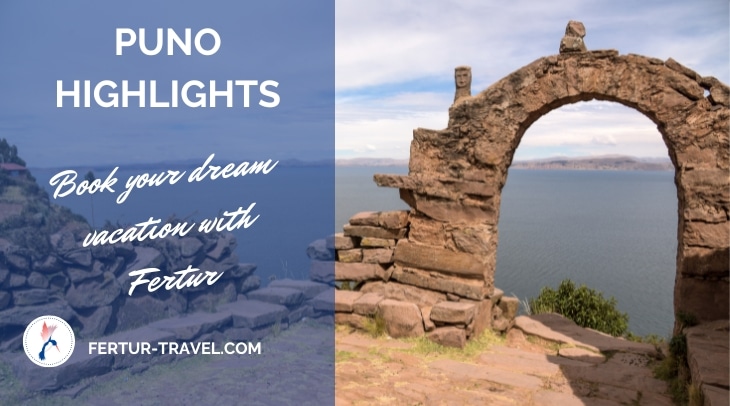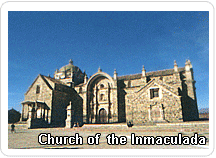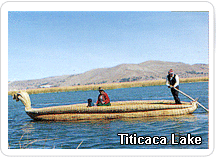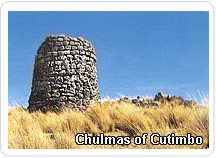

Nestled on the shores of the world’s highest navigable lake, Puno is a city that embodies the rich tapestry of Peruvian culture, history, and natural beauty.
As a gateway to the mesmerizing Lake Titicaca and home to vibrant festivals, ancient ruins, and unique architectural wonders, Puno offers an array of experiences for every traveler.
This comprehensive guide delves into the top attractions and excursions in Puno, providing detailed insights to help you explore this captivating region to its fullest.
The Cathedral of Puno, constructed in the 17th century, is a magnificent example of Spanish Baroque architecture infused with Andean elements. Crafted with carved volcanic stone, it is a fine example of the skill and imagination of “puneño” masons. Nearby the Municipal Museum has an extensive collection of priceless pre-Inca pottery, textiles and artifacts fashioned from gold and silver from the Tiahuanaco culture.
The fusion of styles confers a unique character to this monument, making it a standout in Puno’s architectural landscape. The cathedral’s intricate facade and rich history offer a deep dive into the region’s colonial past.
Built at the end of the 17th century, this historical mansion is said to have hosted the Viceroy Count of Lemos upon his arrival to quell a rebellion. Today, it serves as a cultural center and art gallery, showcasing regional art and providing a glimpse into Puno’s colonial era.
The Yavari, an iron ship built in Great Britain in 1862, was commissioned by the Peruvian government to patrol Lake Titicaca. It took six years to transport its 2,766 pieces from the Pacific coast to the Andean plateau. The museum exhibits the original engine and equipment, and it remains the largest ship of its generation still in operation worldwide.
Titicaca National Reserve is a protected area renowned for its biodiversity, including numerous bird, fish, and amphibian species. Lake Titicaca, sitting at 12,500 feet above sea level and shared by Peru and Bolivia, is steeped in Andean mythology.
The reserve is split into two separate sectors: the first, encompassing the Bay of Puno, protects the totora reed clumps that provide sustenance to the Uros-Chulluni communities; the second, which is located in the Huancané area, features the less-visited totora marshes. In this area there are 60 bird species, including the Titicaca grebe, 14 native fish species and 18 types of amphibians, including the giant Titicaca toad.
According to legend, Manco Cápac and Mama Ocllo, children of the Sun God and founders of the Incan Empire, emerged from its waters. The lake features several natural islands, such as Amantaní, Taquile, Soto, Anapia, and Suasi, each offering unique attractions.

The Uros floating islands, constructed from totora reeds, are home to Uro-Aymara families who maintain their traditional way of life. The men are skilled in handling totora reed boats, while the women are expert knitters. Visitors can explore the islands, interact with the inhabitants, and learn about their fascinating customs.
These inhabitants descend from one of the oldest known tribes in the Americas, began their floating existence centuries ago in an attempt to isolate themselves from incursions by the Colla and Inca civilizations.
Over the centuries they built their islands from the totora reeds that grew abundantly in the shallows of Titicaca. The springy reed ground underfoot is constantly replenished because of the natural process of decay that takes place below the waterline. The availability of the totora reeds has dramatically diminished, the result of draughts caused by global climate change.
Amantaní Island is inhabited by nine communities whose primary livelihood is farming Andean produce like potatoes, corn, and oca. The island is renowned for its handicrafts, including beautiful textiles and stone carvings. Visitors can explore two ceremonial centers, Llacastiti and Coanos, which serve as observatories offering panoramic views of the lake. The islanders also offer accommodations and the opportunity to share in their daily activities.
Located 22 miles (35km) to the east of Puno, Taquile is the largest of the islands found in the lake at 2.4 square miles (6km2) and has an interesting variety of microclimates. The town of Taquile, 13,000 feet above sea level, (3,950m.a.s.l.) has both Tiahuanaco and Inca ruins. It boasts beautiful scenery highlighted by the intense blue waters of the lake and Bolivia´s snowcapped Cordillera Real Mountains in the distance.
The friendly inhabitants of Taquile Island have preserved their customs, traditions, and distinctive dress despite contact with the modern world. The islanders are renowned for their exquisite weaving, declared a Masterpiece of the Oral and Intangible Heritage of Humanity by UNESCO. Visitors can stay in family homes and experience the island’s unique cultural heritage.
Known as the “city of the royal treasury,” Chucuito was a tax collection center during the colonial period. It boasts significant architectural examples in the main square and two Renaissance churches: Saint Dominic (the oldest in the Altiplano, dating back to 1534) and Our Lady of the Assumption (dating back to the 17th century). The Inca Uyo archaeological site, believed to be an observatory and a fertility cult center dedicated to Mother Earth, is also located here.

Located 21 miles (34km) north of Puno, the Sillustani Archaeological Complex is famous for its chullpas, circular stone structures used by ancient dwellers to bury their dead. These impressive ruins were left by the Collas Aymaras, a pre-Inca culture that buried its high priests in round, stone funerary towers. These monuments can be found in various places in the Puno area. But the most impressive are the Chullpas of Sillustani, the tallest of which reaches a height of about 43 feet (13m) on a hilltop overlooking the Lake Umayo peninsula.
Virtually surrounded by Lake Titicaca, the Capachica Peninsula features the Allan Pucará natural observatory, offering breathtaking views of the lake and surrounding towns. The peninsula enjoys a pleasant microclimate due to the lake’s moderating effect on the harsh Altiplano weather.
Llachón is a community of about 1,300 inhabitants who have preserved their native cultural customs and expressions. Residents offer comfortable lodging to visitors, who can reach the community by boat from Puno, Taquile, or Amantaní, or by car from Puno and Juliaca.
Known as the “Little Rome of the Americas” for its numerous churches, Juli was founded in 1534 by Dominicans and later occupied by Jesuits. The town became a strategic center for training missionaries heading to Paraguay or Bolivia. Churches like Saint Peter, Saint John Lateran, Holy Cross, and Our Lady of the Assumption house remarkable stone sculptures, wood carvings, paintings, and canvases by renowned Colonial artists.
One of the most important pre-Hispanic cemeteries in the Altiplano, Cutimbo is associated with the Lupacas and Collas peoples. It features large chullpas, some square-shaped and adorned with carvings of alligators, monkeys, snakes, and cats.
Pomata, known as the “Altiplano Balcony for Reflection,” offers stunning landscapes that invite contemplation and meditation. The town is famous for its Church of Saint James the Apostle, which features a facade teeming with indigenous motifs and a wood-carved cupola.
Known as the “Pink City” due to the color of its walls, Lampa boasts a chinchilla farm, the K’ell K’ello queriual tree forest, the Lensora rock paintings, and a replica of Michelangelo’s Pietà.
Famous for its fine ceramics, especially the Toritos de Pucará (little bulls), Pucará is also home to the Kalasaya archaeological complex, a ceremonial center of the Pucará culture dating back to around 200 B.C.
Referred to as the “Garden of the Altiplano” due to its warm microclimate and variety of roses, Moho is near the village of Conima, known for its church, Saint Michael the Archangel.
Cambria is a small village on the shores of Lake Titicaca, where visitors can participate in farm work, fishing, and weaving. From here, one can row to Suasi Island, which features an ecological lodge powered entirely by solar energy.
Located on the international border between Peru and Bolivia, the Wiriaymarca Archipelago encircles Lake Wiriaymarca. Visitors can find vicuñas, lodges with views of Lake Titicaca, and the magnificent Real Boliviana Cordillera (Royal Bolivian Mountain Range).
Held in the first fortnight of February, this festival is the most important in the department. Celebrated for an entire week, it features traditional dances like the diablada, morenada, llamerada, and hundreds of others. Over 140 dance groups, more than 40,000 dancers, and 12,000 musicians participate in this vibrant event.
Celebrated on May 3rd and 4th, this festival is a special occasion where inhabitants sell miniature handicrafts in street fairs, reflecting the region’s rich artisanal traditions.
On November 4th, the city commemorates its founding with performances of the legend of Manco Cápac and Mama Ocllo, founders of Cusco and the Incan Empire. The celebration also features expressions of civic pride and exhibitions of native dances.
Puno is a city that seamlessly blends historical significance, cultural richness, and natural beauty. From exploring its architectural wonders and ancient ruins to experiencing vibrant festivals and serene natural landscapes, visitors will find a wealth of experiences to enrich their journey. Join us in discovering the highlights and rich heritage of Puno, a destination that promises to captivate and inspire.